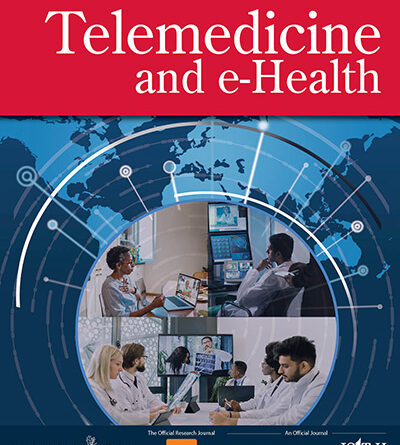Just the Facts! | Telemedicine and e-Health
[ad_1]
In the 1950s and 1960s there was a television show, a police drama called Dragnet. The lead role was played by Jack Webb whose character was Los Angeles police sergeant, Joe Friday. When interrogating a suspect, usually a female, he would say “just the facts ma’am”—no beating around the bush.1 Facts matter and conjecture or opinions to do not.
The news today is always twisted in some way to benefit one side or the other. Just pick a topic, any topic and everyone has an idea; they spin it in some way. But in the disciplines of engineering, science, and medicine, facts matter. Where better to get the facts than a peer-reviewed scientific journal? Furthermore, we cannot make decisions with regard to process improvement or policy formulation without evidence—the facts!
In our growing disciplines of telemedicine, telehealth, e-health, remote monitoring m-health, etc., the research outcomes point the way. Most are positive on growth in application and utilization, while some may be a little reticent to change in the status quo.
In a recent book I edited for NASA, we discussed the confluence of different ideals and concepts, predicated on an individual’s academic training and experience, objectives of the task(s) at hand, and the individual’s or organization’s belief systems. The executive summary of this book was published in New Space.2 In this summary, my coauthors and I commented on the importance of common language in addressing design of systems, thus the use of the moniker—the Rosetta Stone. In this text, the focus was on human systems integration in complex systems that enable human space flight and ensure crew safety and enhance health and human performance, of which telemedicine is a component.
The nature of this study is multifaceted and involves all disciplines, which is based on evidence or the facts. The individual is the constant and essential element. Therefore, this construct can be applied in all aspects in our field of health care. This journal brings the evidence of what has been shown to work worldwide to the reader. Each of us probably has been confronted by an individual or group that will solely base their position on their gut feeling or opinions regardless of what the data indicate. An example of this might include global warming or the full integration and reimbursement of telemedicine and telehealth.
In the early part of the 20th century, medicine in the United States was woefully behind European centers, specifically Germany and France. The foundation of health care education was not standardized, complete, or even very good. It was not based on facts or evidence. Even the integration of technology of the day—the microscope—was challenged. Sounds a lot like today. As we know, this all changed because of (1) a world war and (2) a pandemic that killed millions of people worldwide. John Barry addresses this in his New York Times bestseller The Great Influenza—The Story of the Deadliest Pandemic in History.3
Barry lays out the challenges of the early 20th century paradigm, where intelligent individuals did not change their mindset when confronted with “the facts.” The influenza pandemic of 1918 and concurrent poorly structured government messaging was a challenge to overcome. It took some real rebels to force change and create new approaches based on evidence. Today, of course we have many advanced technologies and capabilities, yet the opinions of a few do not let us move forward as fast as we should. In the construct of an ever-changing paradigm, we must be aware, digest, distill, consider, and understand the facts and how they will help us change.
Just as Joe Friday would solve a crime, we just need the “just the facts ma’am”!
What Is in This Issue
It is September now, and we are hopefully getting cooler weather and getting that much needed precipitation! This issue is full of excellent articles. There are two reviews, one from Japan and four articles on COVID-19. There are two articles that are companion pieces from colleagues in Columbus, Ohio, as well as research outcomes from Japan, Portugal, and the United Kingdom. The 19 submissions bring a wealth of lessons learned from a variety of clinical applications and challenges. All based on facts!
Enjoy and check out Dragnet!!
REFERENCES
- 1.
Dragnet (TV Series). Mark VII Limited Production (1951–1959), Universal Production (1967–1970), NBC Television Network. https://en.wikipedia.org/wiki/Dragnet_(franchise) [Last accessedAugust 16, 2022 ]. Google Scholar - 2. Engineering, life sciences, and health/medicine synergy in aerospace human systems integration: The Rosetta Stone Project: An Executive Summary. New Space 2019;7:110–113 Link, Google Scholar
- 3. . The great influenza—The story of the deadliest pandemic in history. New York, NY: Penguin Books, 2005. Google Scholar
[ad_2]
Source link


